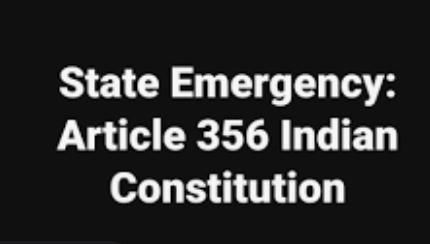An Analysis On Corporate Restructuring Through Various Case Laws
In the corporate sector, the idea of corporate restructuring presents a number
of opportunities. Numerous entities are able to undergo internal or external
rebuilding as a result of unfavourable commercial and economic conditions, rapid
technological innovation, and increased rivalry. Enhancing economies of scale,
reviving failing industrial units, cutting prices, and gaining access to
cutting-edge research and technology are the primary goals.
The primary regulatory framework, including the SCRA and the Finance Act of 1997, SEBI Takeover Regulations, and others, have been changed in order to drastically modify the Indian takeover market. Additionally, as a result of growing digitisation and the post-COVID era, a lot of organisations are restructuring to acquire cutting-edge technology for innovations and to effectively compete in the market by upskilling their current and prospectively efficient personnel. It might also entail firing permanent staff members who are ineffective. A rise in digitalization intensifies the emphasis on obtaining and implementing cloud computing, AI mechanisms, data-driven information utilities, and cybersecurity.
Corporate restructuring can reduce costs, improve efficiency, increase profits, and take advantage of economies of scale. Restructuring and concentrating on competitive advantage may be necessary for a business at times in order to expand or even survive. Eliminating disadvantages and consolidating advantages is the common goal of corporate restructuring, which might involve different methods and tactics for different organisations at different periods. As a result, corporate restructuring is used as a growth strategy in addition to a correction plan.
Legal Requirements:
The development and growth of the corporation are significantly influenced by mergers, acquisitions, and downsizing; these activities are governed by a number of laws. These schemes are governed by a number of statutes, regulations, rules, orders, and notifications, and they are implemented by a number of sectoral regulators, including the Central Government, RBI, SEBI, CCI, RoC, and others.
A corporation that supports the expansion and sustainability of the enterprise would have effective management and a well-defined organisational structure. When a business needs to alter its administrative structure because it has been operating wrongly, downsizing turns out to be an essential step. Acquisitions, downsizing, and mergers may prove to be strategically significant and may result in the company's disintegration. For this reason, in order to benefit the company, all required actions, due diligence before completing any transaction, and compliances must be considered.[1]
Different Forms
When things are not going well and revenues are declining, a corporation may decide to restructure its financial elements. This could be due to unfavorable economic conditions, other externalities, or perhaps even internalities. To maintain the market, survive, cut expenses, and generate a profit again, management may decide to alter its cross-holding strategy, equity allocation, and debt servicing schedule.
Organizational Restructuring
Well-thought-out and implemented organisational restructuring can improve a company's performance, profitability, and overall efficiency. It entails altering the organisational structure, such as by lowering the hierarchical levels, revamping job descriptions, getting rid of surplus or underperforming staff, and adjusting the reporting system.
Methods Of Restructuring
Merger
A merger is a business strategy that involves the amalgamation or absorption of two or more businesses. There are four types of mergers: horizontal, vertical, co-generic, and conglomerate.
Demerger
A demerger involves splitting up an entity's business operations into one or more separate entities. A demerger strategy is implemented in order to maximize a certain business's value and facilitate its smoother, more focused operation.
Joint Venture
A joint venture is a business strategy in which two or more companies form an entity to jointly engage in financial activity. In order to create a new company, the companies agree to contribute equity and split the earnings, costs, and management of the business. Joint ventures can be project- or functional-based, and they are formed for certain time periods.
Take Overs
Another name for a takeover is acquisition. The goal of a takeover or acquisition is for the acquirer to obtain control of the target business in order to dominate the market. Either a friendly or aggressive takeover could occur.
Strategic Alliances
A strategic alliance is an agreement between two or more organizations to work together towards certain goals while maintaining their independence.
Case Laws:
Need For Restructuring
With the exception of financial services firms like banks, non-banking financial companies (NBFCs), and investment funds, even companies that file for bankruptcy in India now have additional options for corporate restructuring through the Corporate Insolvency Resolution Process (CIRP) under the Insolvency and Bankruptcy Code, 2016 (IBC). The IBC's goal is to try to give failing and sinking enterprises another shot. The Recovery of Debts Due to Banks and Financial Institutions Act, 1993.
The Securitization and Reconstruction of Financial Assets and Enforcement of Security Interest Act, 2002, The Finance Act, 1994, The Sick Industrial Companies (Special Provisions) Repeal Act, 2003, The Limited Liability Partnership Act, 2008, The Payment and Settlement Systems Act, 2007, and The Companies Act, 2013 were among the numerous statutes that were involved in the insolvency proceedings prior to the creation of this code. Additionally, ancient laws like the Presidency Towns Insolvency Act, 1909 and the Provincial Insolvency Act, 1920, and bankrupt businesses had limited access to these laws.
Corporate restructuring under CIRP may be started by the business entity itself or by the company's creditors. In this procedure, certified insolvency specialists collaborate with the creditors and the corporate debtor to develop a workable restructuring plan, which is then put into action following the National Company Law Tribunal's (NCLT) necessary permission.
There are now four distinct procedure paths in India for the restructuring and resolution of troubled or defaulting firms.
Resolution through CIRP for a defaulting company; if that fails, liquidation under the IBC; Enforcement or recovery against a defaulting company and its assets or guarantees through statutory mechanisms under the applicable laws; Restructuring by RBI-regulated institutions in accordance with the relevant circulars issued by the RBI for distressed companies (i.e., companies that have defaulted on their debt obligations for 30 to 60 days); and Voluntary restructuring of assets and liabilities under a scheme of arrangement under the Companies Act 2013.
Corporate restructuring is frequently used as a rescue tactic when organisations are experiencing losses, economic downturns, declining consumer bases, or fierce competition. In a different scenario where the Covid-19 pandemic caused a global downturn, corporate restructuring will be crucial to the revival and rescue of numerous firms worldwide. Studies have indicated that corporations that engage in frequent restructurings, extensive layoffs, significant asset sales, high debt levels, and a failure to focus on core competencies and cost reductions are more likely to be delisted.
Conclusion
Corporate restructuring is a general phrase that includes a range of tactics used to turn around failing companies or bring value and growth to others. Corporate restructuring, spearheaded by CIRP-IBC-NCLT, has revolutionised this industry in India and elevated the country to a global level; nonetheless, a number of concerns still need to be resolved before it's too late.
The government was quick to see the flaws and is taking the necessary action to address the issue. There have been recent charges that certain groups are abusing the CIRP-IBC-NCLT system and undermining the fundamental goals of IBC and CIRP. The government has established an expert committee to investigate the possibility of implementing the UNCITRAL Model Law on cross-border insolvency.
The government is actively pursuing this issue, with the possibility that awards made in India under the IBC will be enforced across international borders. Therefore, both under company law and under insolvency law, one might anticipate significant advancements in corporate reorganisation.
The government and the RBI aim to empower the Insolvency and Bankruptcy Board of India (IBBI) and insolvency professionals in order to reduce the length of time it takes to complete the restructuring and resolution process of distressed companies, issues encountered by insolvency professionals during their work, and delays involved in obtaining approvals from the NCLT.
End-Notes:
The primary regulatory framework, including the SCRA and the Finance Act of 1997, SEBI Takeover Regulations, and others, have been changed in order to drastically modify the Indian takeover market. Additionally, as a result of growing digitisation and the post-COVID era, a lot of organisations are restructuring to acquire cutting-edge technology for innovations and to effectively compete in the market by upskilling their current and prospectively efficient personnel. It might also entail firing permanent staff members who are ineffective. A rise in digitalization intensifies the emphasis on obtaining and implementing cloud computing, AI mechanisms, data-driven information utilities, and cybersecurity.
Corporate restructuring can reduce costs, improve efficiency, increase profits, and take advantage of economies of scale. Restructuring and concentrating on competitive advantage may be necessary for a business at times in order to expand or even survive. Eliminating disadvantages and consolidating advantages is the common goal of corporate restructuring, which might involve different methods and tactics for different organisations at different periods. As a result, corporate restructuring is used as a growth strategy in addition to a correction plan.
Legal Requirements:
The development and growth of the corporation are significantly influenced by mergers, acquisitions, and downsizing; these activities are governed by a number of laws. These schemes are governed by a number of statutes, regulations, rules, orders, and notifications, and they are implemented by a number of sectoral regulators, including the Central Government, RBI, SEBI, CCI, RoC, and others.
A corporation that supports the expansion and sustainability of the enterprise would have effective management and a well-defined organisational structure. When a business needs to alter its administrative structure because it has been operating wrongly, downsizing turns out to be an essential step. Acquisitions, downsizing, and mergers may prove to be strategically significant and may result in the company's disintegration. For this reason, in order to benefit the company, all required actions, due diligence before completing any transaction, and compliances must be considered.[1]
Different Forms
- Financial Restructuring
- Organisational Restructuring
When things are not going well and revenues are declining, a corporation may decide to restructure its financial elements. This could be due to unfavorable economic conditions, other externalities, or perhaps even internalities. To maintain the market, survive, cut expenses, and generate a profit again, management may decide to alter its cross-holding strategy, equity allocation, and debt servicing schedule.
Organizational Restructuring
Well-thought-out and implemented organisational restructuring can improve a company's performance, profitability, and overall efficiency. It entails altering the organisational structure, such as by lowering the hierarchical levels, revamping job descriptions, getting rid of surplus or underperforming staff, and adjusting the reporting system.
Methods Of Restructuring
- Merger
- Demerger
- Joint Venture
- Take Overs
- Strategic Alliances
Merger
A merger is a business strategy that involves the amalgamation or absorption of two or more businesses. There are four types of mergers: horizontal, vertical, co-generic, and conglomerate.
Demerger
A demerger involves splitting up an entity's business operations into one or more separate entities. A demerger strategy is implemented in order to maximize a certain business's value and facilitate its smoother, more focused operation.
Joint Venture
A joint venture is a business strategy in which two or more companies form an entity to jointly engage in financial activity. In order to create a new company, the companies agree to contribute equity and split the earnings, costs, and management of the business. Joint ventures can be project- or functional-based, and they are formed for certain time periods.
Take Overs
Another name for a takeover is acquisition. The goal of a takeover or acquisition is for the acquirer to obtain control of the target business in order to dominate the market. Either a friendly or aggressive takeover could occur.
Strategic Alliances
A strategic alliance is an agreement between two or more organizations to work together towards certain goals while maintaining their independence.
Case Laws:
- Yes Bank (2020)[2]
Reason for Restructuring;
When problems arose, Yes Bank Ltd.'s financial situation quickly got worse, especially in terms of its capital, liquidity, and other crucial metrics. The Reserve Bank of India (RBI) was forced to step in and act in the public interest due to the alleged dishonesty of bank executives and the total lack of any credible strategy by the board and stakeholders for the infusion of capital. Yes Bank's third fiscal quarter ended in December 2019 saw losses of ₹185.64 billion, and the percentage of Gross Non-Performing Assets increased to 18.87 percent from 2.10 percent the previous year. It was evident that the bank would not be able to survive without capital infusion and the clearing of its bad debts.
The RBI's announcement of Yes Bank's reconstruction plan, along with suggested adjustments to the authorized capital and equity share count. Yes Bank imposed a ban on withdrawals, allowing account holders to withdraw a maximum of ₹50,000/-in total throughout the duration of the moratorium. The State Bank of India (SBI) would contribute up to 49% of the stock in Yes Bank in accordance with the authorised rebuilding plan for the bank. The investor consortium that invested in Yes Bank included Axis Bank, Bandhan Bank, Federal Bank, Housing Development Finance Corp (HDFC), ICICI Bank, IDFC First, and Kotak Mahindra Bank. According to the approved reconstruction plan, other investors and shareholders must lock in 75% of their investment in Yes Bank for a mandatory period of three years, while SBI, which invested 49% equity at the time of restructuring, was not allowed to reduce its stake to below 26% for three years.
It was mandated that the newly established, interim board, which was appointed by the RBI, serve for a full year or until another board was appointed by Yes Bank. According to reports, Yes Bank staff kept their jobs with the same benefits and pay as they had the year before. Yes Bank's offices and branches kept operating in the same ways and at the same locations as before. There was no restriction on creating new branches and offices or shutting down the ones that already existed. The reorganised Yes Bank's new management is still pursuing the recovery of nonperforming loans and working with investors and asset reconstruction firms to clean up the books. In the September 2021 quarter, gross non-performing assets decreased to 14.97% from 15.6% in the June 2021 quarter. The reorganised Yes Bank is attempting to shift its emphasis away from corporate lending, where it burned its fingers on defaults, and into retail and MSME lending.
- Reliance Industries Limited (2005)
Reason for restructuring
Incompatibility between promoter-successors.
Due to discord between Mr. Mukesh and Mr. Anil, the two successors, Reliance Industries Limited (formerly known as "RIL") underwent a reorganisation (split) in June 2005. The intricate allocation of ₹1000 billion in wealth was the focal point of the RIL restructuring. In August 2005, the RIL board approved a demerger in which Mr. Mukesh and Mr. Anil, the brothers, oversaw separate operations. By January 2006, five firms had emerged from the demerger. Reliance Capital and Reliance Energy were two of the RIL Group's companies that were previously listed on exchanges. By the end of March 2006, the last four companies were listed.
- Core companies of RIL:
- Trevira - A European company that makes polyester fibres.
- IPCL - Engaged in oil exploration, refining, petrochemicals, and textile enterprises.
- Reliance Life Sciences - A biotech company.
- Anil Dhirubhai Ambani Enterprise: Through four companies, Mr. Anil gained total control over the banking, communication, and power sectors.
- Reliance Capital Ventures Ltd. - Later merged with Reliance Capital Ltd.
- Reliance Energy Ventures Ltd. - Later merged with Reliance Energy Ltd.
- Reliance Communication Ventures Ltd. - Included both Reliance Infocom and Reliance Telecom.
- Reliance Natural Resources Ltd. - Included businesses in gas-based energy undertakings.
- Post-Demerger Share Prices: Following the Demerger, the share prices of the five businesses listed on the NSE and BSE were quoted differently. RIL's share price was approximately ₹978 per share prior to the reorganisation. However, following the restructuring, the combined value of the demerged shares of the aforementioned five firms was approximately ₹1235/-.
Need For Restructuring
With the exception of financial services firms like banks, non-banking financial companies (NBFCs), and investment funds, even companies that file for bankruptcy in India now have additional options for corporate restructuring through the Corporate Insolvency Resolution Process (CIRP) under the Insolvency and Bankruptcy Code, 2016 (IBC). The IBC's goal is to try to give failing and sinking enterprises another shot. The Recovery of Debts Due to Banks and Financial Institutions Act, 1993.
The Securitization and Reconstruction of Financial Assets and Enforcement of Security Interest Act, 2002, The Finance Act, 1994, The Sick Industrial Companies (Special Provisions) Repeal Act, 2003, The Limited Liability Partnership Act, 2008, The Payment and Settlement Systems Act, 2007, and The Companies Act, 2013 were among the numerous statutes that were involved in the insolvency proceedings prior to the creation of this code. Additionally, ancient laws like the Presidency Towns Insolvency Act, 1909 and the Provincial Insolvency Act, 1920, and bankrupt businesses had limited access to these laws.
Corporate restructuring under CIRP may be started by the business entity itself or by the company's creditors. In this procedure, certified insolvency specialists collaborate with the creditors and the corporate debtor to develop a workable restructuring plan, which is then put into action following the National Company Law Tribunal's (NCLT) necessary permission.
There are now four distinct procedure paths in India for the restructuring and resolution of troubled or defaulting firms.
Resolution through CIRP for a defaulting company; if that fails, liquidation under the IBC; Enforcement or recovery against a defaulting company and its assets or guarantees through statutory mechanisms under the applicable laws; Restructuring by RBI-regulated institutions in accordance with the relevant circulars issued by the RBI for distressed companies (i.e., companies that have defaulted on their debt obligations for 30 to 60 days); and Voluntary restructuring of assets and liabilities under a scheme of arrangement under the Companies Act 2013.
Corporate restructuring is frequently used as a rescue tactic when organisations are experiencing losses, economic downturns, declining consumer bases, or fierce competition. In a different scenario where the Covid-19 pandemic caused a global downturn, corporate restructuring will be crucial to the revival and rescue of numerous firms worldwide. Studies have indicated that corporations that engage in frequent restructurings, extensive layoffs, significant asset sales, high debt levels, and a failure to focus on core competencies and cost reductions are more likely to be delisted.
Conclusion
Corporate restructuring is a general phrase that includes a range of tactics used to turn around failing companies or bring value and growth to others. Corporate restructuring, spearheaded by CIRP-IBC-NCLT, has revolutionised this industry in India and elevated the country to a global level; nonetheless, a number of concerns still need to be resolved before it's too late.
The government was quick to see the flaws and is taking the necessary action to address the issue. There have been recent charges that certain groups are abusing the CIRP-IBC-NCLT system and undermining the fundamental goals of IBC and CIRP. The government has established an expert committee to investigate the possibility of implementing the UNCITRAL Model Law on cross-border insolvency.
The government is actively pursuing this issue, with the possibility that awards made in India under the IBC will be enforced across international borders. Therefore, both under company law and under insolvency law, one might anticipate significant advancements in corporate reorganisation.
The government and the RBI aim to empower the Insolvency and Bankruptcy Board of India (IBBI) and insolvency professionals in order to reduce the length of time it takes to complete the restructuring and resolution process of distressed companies, issues encountered by insolvency professionals during their work, and delays involved in obtaining approvals from the NCLT.
End-Notes:
- https://blog.ipleaders.in/corporate-restructuring-as-a-solution-for-business-failures/, (last visited on 29th April, 2024)
- https://www.livemint.com/industry/banking/yes-bank-showing-remarkable-progress-to-take-to-2-more-yrs-to-stabilise-former-sbi-chief-11634729089342.html, (last visited 30th April, 2024).
Law Article in India
Legal Question & Answers
Lawyers in India - Search By City
LawArticles
How To File For Mutual Divorce In Delhi

How To File For Mutual Divorce In Delhi Mutual Consent Divorce is the Simplest Way to Obtain a D...
Increased Age For Girls Marriage

It is hoped that the Prohibition of Child Marriage (Amendment) Bill, 2021, which intends to inc...
Facade of Social Media

One may very easily get absorbed in the lives of others as one scrolls through a Facebook news ...
Section 482 CrPc - Quashing Of FIR: Guid...

The Inherent power under Section 482 in The Code Of Criminal Procedure, 1973 (37th Chapter of t...
The Uniform Civil Code (UCC) in India: A...

The Uniform Civil Code (UCC) is a concept that proposes the unification of personal laws across...
Role Of Artificial Intelligence In Legal...

Artificial intelligence (AI) is revolutionizing various sectors of the economy, and the legal i...







Please Drop Your Comments